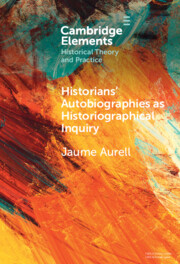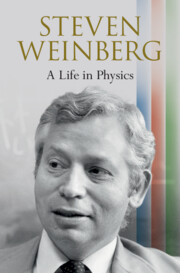129 results
Chapter 13 - Entre Balas y Rugidos
- from Part IV - Form
-
-
- Book:
- Latinx Literature in Transition, 1848–1992
- Published online:
- 10 April 2025
- Print publication:
- 17 April 2025, pp 227-241
-
- Chapter
- Export citation
Chapter 7 - The Camaraderie of Influence
- from Part II - Being
-
-
- Book:
- Latinx Literature in Transition, 1848–1992
- Published online:
- 10 April 2025
- Print publication:
- 17 April 2025, pp 126-142
-
- Chapter
- Export citation
Chapter 37 - Reflections of a Developmental Psychologist from India
-
-
- Book:
- Pillars of Developmental Psychology
- Published online:
- 14 February 2025
- Print publication:
- 20 February 2025, pp 421-433
-
- Chapter
- Export citation

Pillars of Developmental Psychology
- Recollections and Reflections
-
- Published online:
- 14 February 2025
- Print publication:
- 20 February 2025
Getting lost in a field: a personal history of the development of behavioural public policy
-
- Journal:
- Behavioural Public Policy , First View
- Published online by Cambridge University Press:
- 03 February 2025, pp. 1-5
-
- Article
-
- You have access
- Open access
- HTML
- Export citation
Accommodating cosmopolitan experiences: Jiang Dunfu’s 蔣敦復 and Wang Tao’s 王韜 autobiographical processing of their treaty port years
-
- Journal:
- Modern Asian Studies , First View
- Published online by Cambridge University Press:
- 17 January 2025, pp. 1-20
-
- Article
-
- You have access
- Open access
- HTML
- Export citation
Chapter 34 - Sermons
- from Part VI - Form, Genre, and Poetics
-
-
- Book:
- Gerard Manley Hopkins in Context
- Published online:
- 16 January 2025
- Print publication:
- 16 January 2025, pp 292-298
-
- Chapter
- Export citation
Chapter 1 - Untimely Deaths and Artful Promise in Henry James’s Post-1890 Writings
-
- Book:
- Twentieth-Century Literature and the Aftermath of War
- Published online:
- 20 December 2024
- Print publication:
- 09 January 2025, pp 37-78
-
- Chapter
- Export citation

Historians' Autobiographies as Historiographical Inquiry
- A Global Perspective
-
- Published online:
- 06 January 2025
- Print publication:
- 02 January 2025
-
- Element
- Export citation
3.10 - Self-Writing
- from History 3 - Forms
-
-
- Book:
- The New Cambridge History of Russian Literature
- Published online:
- 31 December 2024
- Print publication:
- 12 December 2024, pp 624-642
-
- Chapter
- Export citation

Steven Weinberg: A Life in Physics
-
- Published online:
- 22 November 2024
- Print publication:
- 12 December 2024
Chapter 1 - Hannibal and Scipio on Themselves
-
- Book:
- Hannibal and Scipio
- Published online:
- 05 September 2024
- Print publication:
- 26 September 2024, pp 9-40
-
- Chapter
- Export citation
19 - The Urban Familiar Essay of the Romantic Era
- from Part II - The Great Age of the British Essay
-
-
- Book:
- The Cambridge History of the British Essay
- Published online:
- 31 October 2024
- Print publication:
- 04 July 2024, pp 275-288
-
- Chapter
- Export citation
27 - History Touches Us Everywhere
- from Queer Genre
-
-
- Book:
- The Cambridge History of Queer American Literature
- Published online:
- 17 May 2024
- Print publication:
- 06 June 2024, pp 470-486
-
- Chapter
- Export citation
Chapter 4 - “The Age-Long Memoried Self”
-
- Book:
- Yeats, Revival, and the Temporalities of Irish Modernism
- Published online:
- 11 April 2024
- Print publication:
- 18 April 2024, pp 121-159
-
- Chapter
- Export citation
Chapter 19 - Photography
- from Part V - Life, Illness, and the Arts
-
-
- Book:
- Robert Lowell In Context
- Published online:
- 28 March 2024
- Print publication:
- 04 April 2024, pp 206-215
-
- Chapter
- Export citation
Chapter 25 - Lowell’s Influence
- from Part VI - Reputation and New Contexts
-
-
- Book:
- Robert Lowell In Context
- Published online:
- 28 March 2024
- Print publication:
- 04 April 2024, pp 272-283
-
- Chapter
- Export citation
Chapter 21 - Letters
- from Part VI - Reputation and New Contexts
-
-
- Book:
- Robert Lowell In Context
- Published online:
- 28 March 2024
- Print publication:
- 04 April 2024, pp 229-237
-
- Chapter
- Export citation
Chapter 11 - T. S. Eliot
- from Part IV - Contemporaries
-
-
- Book:
- Robert Lowell In Context
- Published online:
- 28 March 2024
- Print publication:
- 04 April 2024, pp 121-129
-
- Chapter
- Export citation

Writing Mobile Lives, 1500–1700
-
- Published online:
- 14 March 2024
- Print publication:
- 04 April 2024
-
- Element
-
- You have access
- Open access
- HTML
- Export citation


